 W
WFalconry is the hunting of wild animals in their natural state and habitat by means of a trained bird of prey. Small animals are hunted; squirrels and rabbits often fall prey to these birds. Two traditional terms are used to describe a person involved in falconry: a "falconer" flies a falcon; an "austringer" flies a hawk or an eagle. In modern falconry, the red-tailed hawk, Harris's hawk, and the peregrine falcon are some of the more commonly used birds of prey. The practice of hunting with a conditioned falconry bird is also called "hawking" or "gamehawking", although the words hawking and hawker have become used so much to refer to petty traveling traders, that the terms "falconer" and "falconry" now apply to most use of trained birds of prey to catch game. Many contemporary practitioners still use these words in their original meaning, however.
 W
WBal-chatri are traps designed to catch birds of prey (raptors). The trap essentially consists of a cage baited inside with a conspicuously visible live rodent or small bird, with a series of monofilament nooses attached to the surface to snare the legs of a free-flying raptor that attempts to take the bait. The name is derived from the Hindi word used by trappers in India. Modified bal-chatri traps are also used for catching shrikes.
 W
WLorant de Bastyai was a member of the international falconry community. He is perhaps best known in the United Kingdom for establishing the Welsh Hawking Club. He was also an honorary member of the British Falconers Club, the Hawking Club of Great Britain, the North American Falconry Club, the Austrian, German and French Associations. He was born in Szeged, Hungary in 1910. His father's love of hunting, horses and racing pigeons fuelled Lorant's early passion for nature and birds in particular. A chance encounter with a visiting British falconer launched a career that would span 60 years and have a profound impact in reviving a sport that had become all but extinct.
 W
WDe Arte Venandi cum Avibus, literally On The Art of Hunting with Birds, is a Latin treatise on ornithology and falconry written in the 1240s by the Holy Roman Emperor Frederick II. One of the surviving manuscripts is dedicated to his son Manfred. Manuscripts of De arte venandi cum avibus exist in a two-book version and in a six-book version.
 W
WThe Eagle Huntress is a 2016 internationally co-produced Kazakh-language documentary film directed by Otto Bell and narrated by executive producer Daisy Ridley. It follows the story of Aisholpan, a 13-year-old Kazakh girl from Mongolia, as she attempts to become the first female eagle hunter to compete in the eagle festival at Ulgii, Mongolia, established in 1999.
 W
WThe Eurasian eagle-owl is a species of eagle-owl that resides in much of Eurasia. It is also called the European eagle-owl and in Europe, it is occasionally abbreviated to just the eagle-owl. It is one of the largest species of owl, and females can grow to a total length of 75 cm (30 in), with a wingspan of 188 cm, with males being slightly smaller. This bird has distinctive ear tufts, with upper parts that are mottled with darker blackish colouring and tawny. The wings and tail are barred. The underparts are a variably hued buff, streaked with darker colouring. The facial disc is not very visible and the orange eyes are distinctive.
 W
WThe Eurasian sparrowhawk, also known as the northern sparrowhawk or simply the sparrowhawk, is a small bird of prey in the family Accipitridae. Adult male Eurasian sparrowhawks have bluish grey upperparts and orange-barred underparts; females and juveniles are brown above with brown barring below. The female is up to 25% larger than the male – one of the greatest size differences between the sexes in any bird species. Though it is a predator which specialises in catching woodland birds, the Eurasian sparrowhawk can be found in any habitat and often hunts garden birds in towns and cities. Males tend to take smaller birds, including tits, finches, and sparrows; females catch primarily thrushes and starlings, but are capable of killing birds weighing 500 g (18 oz) or more.
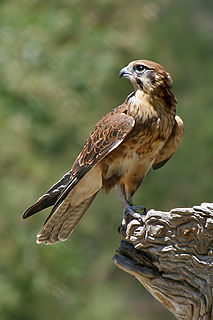 W
WFalcons are birds of prey in the genus Falco, which includes about 40 species. Falcons are widely distributed on all continents of the world except Antarctica, though closely related raptors did occur there in the Eocene.
 W
WThe Barbary falcon is a medium-sized falcon about the size of a crow. This bird of prey is mainly resident.
 W
WThe lanner falcon is a medium-sized bird of prey that breeds in Africa, southeast Europe and just into Asia. It prefers open habitat and is mainly resident, but some birds disperse more widely after the breeding season. A large falcon, it preys on birds and bats.
 W
WThe saker falcon is a large species of falcon. This species breeds from central Europe eastwards across the Palearctic to Manchuria. It is mainly migratory except in the southernmost parts of its range, wintering in Ethiopia, the Arabian peninsula, northern Pakistan and western China. The saker falcon is the national bird of Hungary, United Arab Emirates, and Mongolia.
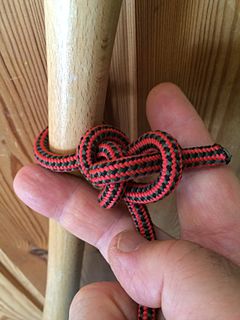 W
WThe falconer's knot is a knot used in falconry to tether a bird of prey to a perch. Some sources show this knot to be identical to the halter hitch, but with a specific method of single-handed tying needed when the other hand is occupied holding the bird.
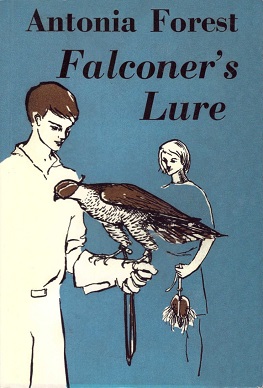 W
WFalconer's Lure is a 1957 falconry-based novel by Antonia Forest. Falconer's Lure is the third book in the series, between The Marlows and the Traitor and End of Term.
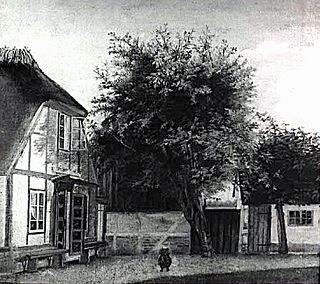 W
WFalkonergården was a royal Danish facility for stabling of peregrine falcons for falconry located in Frederiksberg outside Copenhagen from 1670. It closed in 1810 and the buildings have been demolished except for one wing which is still seen in an alley off Falkoner Allé. Falkonergården is commemorated in Frederiksberg Municipality's shield as well as in the names of several buildings and public spaces.
 W
WGage Earle Freeman (1820–1903) was an English clergyman, known as a writer on falconry.
 W
WPhillip Edward Brougham Glasier was Britain's leading expert on hawking and falconry. Glasier initiated a new interest in falconry in both the UK and the United States of America. He spent much of his life involved with the conservation and breeding of raptors and bringing them to public attention through the foundation of the Falconry Centre, Newent, Gloucestershire, as well as through books, lectures and public demonstrations. He founded the Hawk Trust with John Burkett and the Raptor Breeders' Association.
 W
WThe Golden Eagle Festival or Eagle Festival, is an annual traditional festival held in Bayan-Ölgii aimag, Mongolia. In the eagle festival, Kazakh eagle hunters (Burkitshi) celebrate their heritage and compete to catch small animals such as foxes and hares with specially trained golden eagles, showing off the skills both of the birds and their trainers. Prizes are awarded for speed, agility and accuracy, as well as for the best traditional Kazakh dress, and more.
 W
WThe northern goshawk is a medium-large raptor in the family Accipitridae, which also includes other extant diurnal raptors, such as eagles, buzzards and harriers. As a species in the genus Accipiter, the goshawk is often considered a "true hawk". The scientific name is Latin; Accipiter is "hawk", from accipere, "to grasp", and gentilis is "noble" or "gentle" because in the Middle Ages only the nobility were permitted to fly goshawks for falconry.
 W
WThe Grand Falconer of France was a position in the King's Household in France from the Middle Ages to the French Revolution.
 W
WThe gyrfalcon, the largest of the falcon species, is a bird of prey. The abbreviation gyr is also used. It breeds on Arctic coasts and tundra, and the islands of northern North America and the Eurosiberian region. It is mainly a resident there also, but some gyrfalcons disperse more widely after the breeding season, or in winter. Individual vagrancy can take birds for long distances. Its plumage varies with location, with birds being coloured from all-white to dark brown. These colour variations are called morphs. Like other falcons, it shows sexual dimorphism, with the female much larger than the male. For centuries, the gyrfalcon has been valued as a hunting bird. Typical prey includes the ptarmigan and waterfowl, which it may take in flight; it also takes fish and mammals.
 W
WHarris's hawk, formerly known as the bay-winged hawk or dusky hawk, and known in Latin America as peuco, is a medium-large bird of prey that breeds from the southwestern United States south to Chile, central Argentina, and Brazil. Birds are sometimes reported at large in Western Europe, especially Britain, but it is a popular species in falconry and these records almost certainly all refer to escapes from captivity.
 W
WThe red-tailed hawk is a bird of prey that breeds throughout most of North America, from the interior of Alaska and northern Canada to as far south as Panama and the West Indies. It is one of the most common members within the genus of Buteo in North America or worldwide. The red-tailed hawk is one of three species colloquially known in the United States as the "chickenhawk", though it rarely preys on standard-sized chickens. The bird is sometimes also referred to as the red-tail for short, when the meaning is clear in context. Red-tailed hawks can acclimate to all the biomes within their range, occurring on the edges of non-ideal habitats such as dense forests and sandy deserts. The red-tailed hawk occupies a wide range of habitats and altitudes including deserts, grasslands, coniferous and deciduous forests, agricultural fields and urban areas. Its latitudinal limits fall around the tree line in the Arctic and the species is absent from the high Arctic. It is legally protected in Canada, Mexico, and the United States by the Migratory Bird Treaty Act.
 W
WMaya Higa is an American conservationist, falconer, wildlife rehabilitator, and Twitch streamer. She is the founder of Alveus Sanctuary, a non-profit exotic animal sanctuary and virtual education center based in Austin, Texas.
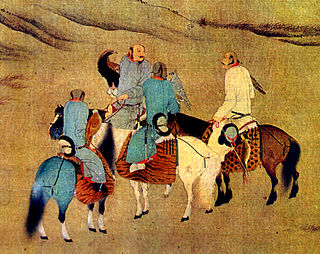 W
WHunting with eagles is a traditional form of falconry found throughout the Eurasian Steppe, practised by ancient Mongolic and Turkic peoples. Today it is practised by Kazakhs and the Kyrgyz in contemporary Kazakhstan and Kyrgyzstan, as well as diasporas in Bayan-Ölgii Provinces Bayan-Ölgii, Mongolia, and Xinjiang, China. Though these people are most famous for hunting with golden eagles, they have been known to train northern goshawks, peregrine falcons, saker falcons, and more.
 W
WThe International Centre for Birds of Prey, formerly the National Birds of Prey Centre, in the United Kingdom houses a large collection of birds of prey with over 60 species of owls, eagles and hawks. It works towards the conservation of birds of prey through education, captive breeding, research and rehabilitation. The centre is located at Boulsdon near Newent in Gloucestershire. The Director is Jemima (Glasier) Parry-Jones.
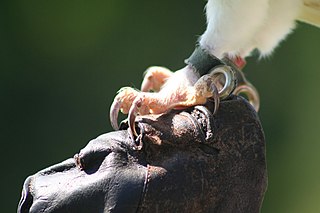 W
WA jess is a thin strap, traditionally made from leather, used to tether a hawk or falcon in falconry. Jesses allow a falconer to keep control of a bird while it is on the glove or in training, and allow a bird to be secured on a perch outside its aviary.
 W
WThe Kasselburg is a ruined hill castle on a 490-metre-high basalt massif in Pelm near Gerolstein in the county of Vulkaneifel in the German state of Rhineland-Palatinate.
 W
WKes is a 1969 British drama film directed by Ken Loach and produced by Tony Garnett, based on the 1968 novel A Kestrel for a Knave, written by the Hoyland Nether-born author Barry Hines. Kes tells the story of Billy, who comes from a working-class and dysfunctional family and is a no-hoper at school, who seems destined for a dreary future working in the local coal mine like his bullying elder brother. Billy, however, discovers his own private means of temporary escape and fulfilment when he steals a fledgling kestrel—a small bird of prey—from its nest in the surrounding countryside and proceeds to train it in the art of falconry, which he teaches himself from a similarly stolen book. We follow Billy's escapades through the final weeks of his schooling, some comic, some bleak and some involving discourse with a sole empathetic, interested teacher, until an error of judgement on Billy's part leads to a final, tragic ending.
 W
WThe common kestrel is a bird of prey species belonging to the kestrel group of the falcon family Falconidae. It is also known as the European kestrel, Eurasian kestrel, or Old World kestrel. In Britain, where no other kestrel species commonly occurs, it is generally just called "kestrel".
 W
WThe red kite is a medium-large bird of prey in the family Accipitridae, which also includes many other diurnal raptors such as eagles, buzzards, and harriers. The species currently breeds in the Western Palearctic region of Europe and northwest Africa, though it formerly also occurred in northern Iran. It is resident in the milder parts of its range in western Europe and northwest Africa, but birds from northeastern and Central Europe winter further south and west, reaching south to Turkey. Vagrants have reached north to Finland and south to Palestine and Israel, Libya and Gambia.
 W
WDon Pero López de Ayala (1332–1407) was a Castilian statesman, historian, poet, chronicler, chancellor, and courtier.
 W
WA lure is an object used in falconry, usually made of leather with a pair of bird wings or feathers attached. It is often an effigy of a prey species or preferred quarry. A falconer swings the lure round and round on a cord for the falcon to chase for exercise. There are at least three types of lure-flying. Short line, long line and pole luring. A lure also may be used as an object to call the falcon, hawk or eagle to return.
 W
WMoamyn was the name given in Medieval Europe to an Arabic author of a five-chapter treatise on falconry, important for early Europeans, which was most popular as translated by the Syriac Theodore of Antioch under the title De Scientia Venandi per Aves in 1240 to 1241. It also contained a chapter on hunting with dogs and chapters on other related subjects such as diseases of birds. There are about 27 Latin manuscript versions of Moamyn's work with two of them being illustrated throughout, with a well-known copy held in Vienna.
 W
WThe barn owl is the most widely distributed species of owl in the world and one of the most widespread of all species of birds. It is also known as the common barn owl, to distinguish it from the other species in its family, Tytonidae, which forms one of the two main lineages of living owls, the other being the typical owls (Strigidae). The barn owl is found almost everywhere in the world except for the polar and desert regions, Asia north of the Himalayas, most of Indonesia, and some Pacific islands.
 W
WThe western barn owl is usually considered a subspecies group and together with the American barn owl group, the eastern barn owl group, and sometimes the Andaman masked owl make up the barn owl. The cosmopolitan barn owl is recognized by most taxonomic authorities. A few separate them into distinct species, as is done here. The western barn owl is native to Eurasia and Africa.
 W
WJemima Parry-Jones is a British authority on birds of prey (raptors), a conservationist, author, raptor breeder, lecturer, consultant and is the Director of the International Centre for Birds of Prey.
 W
WThe peregrine falcon, also known as the peregrine, and historically as the duck hawk in North America, is a widespread bird of prey (raptor) in the family Falconidae. A large, crow-sized falcon, it has a blue-grey back, barred white underparts, and a black head. The peregrine is renowned for its speed, reaching over 320 km/h (200 mph) during its characteristic hunting stoop, making it the fastest bird in the world, as well as the fastest member of the animal kingdom. According to a National Geographic TV program, the highest measured speed of a peregrine falcon is 389 km/h (242 mph). As is typical for bird-eating raptors, peregrine falcons are sexually dimorphic, with females being considerably larger than males.
 W
WThe word perlin is a falconer's term for a cross breed of a peregrine falcon and a merlin. It is much bigger and faster than a merlin, but is not as big as a peregrine so the quarry it takes varies from larger songbirds to small game birds such as hen pheasant. It is less likely to fly as high as a peregrine and usually rings close to the falconer. As a rule, the peregrine is the father and the merlin is the mother.
 W
WRabenstein Castle is a former high medieval aristocratic castle in the municipality of Ahorntal in the Upper Franconian county of Bayreuth in the German state of Bavaria.
 W
WFrancis Henry Salvin (1817–1904) was an English writer on falconry and cormorant-fishing.
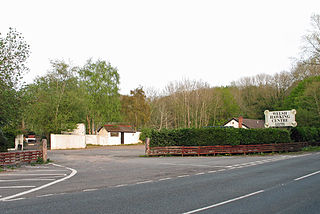 W
WThe Welsh Hawking Centre and Children's Animal Park is a hawking centre on Weycock Road on the northwestern outskirts of Barry, Vale of Glamorgan, in southern Wales. It contains the largest collection of birds of prey in Wales, with over 200 birds on site including eagles, owls, hawks, falcons and buzzards.